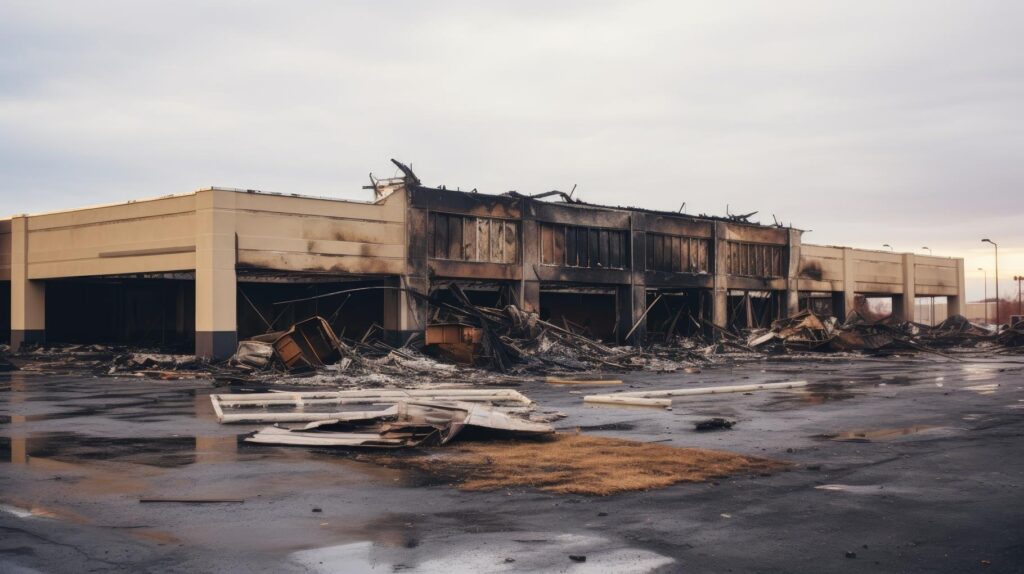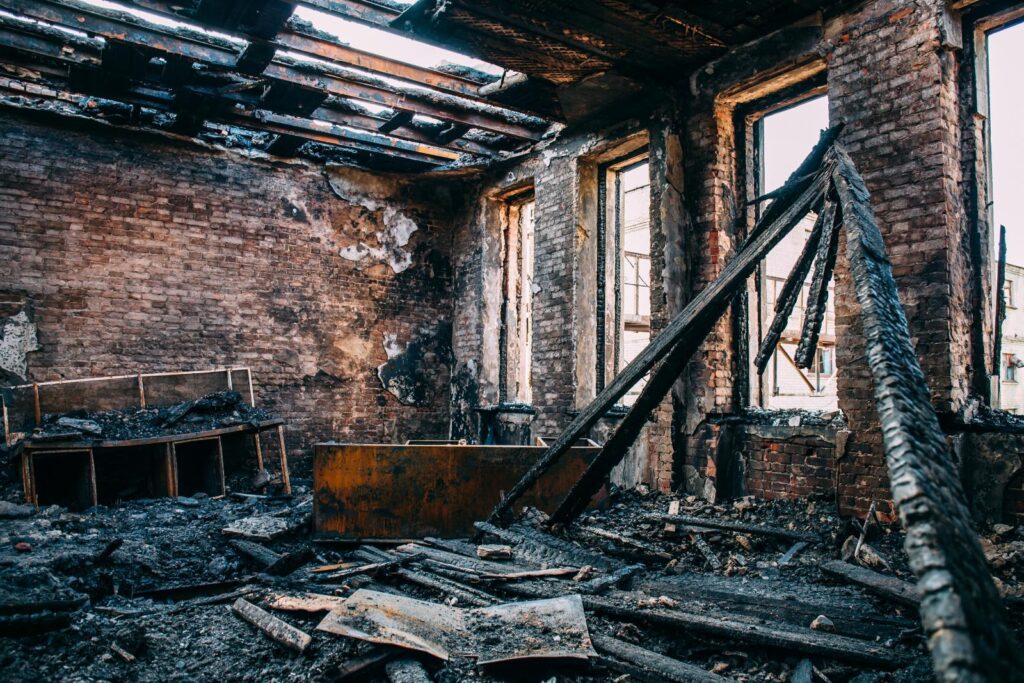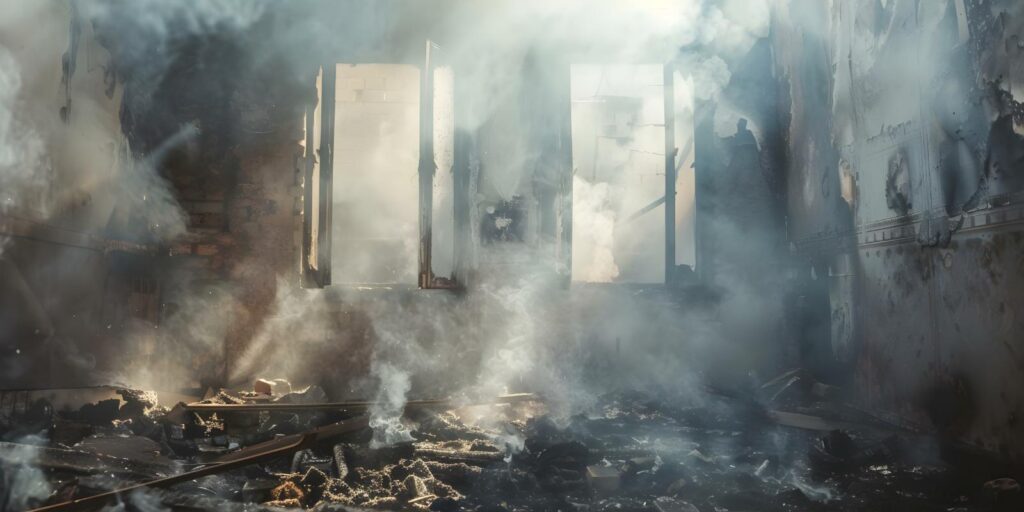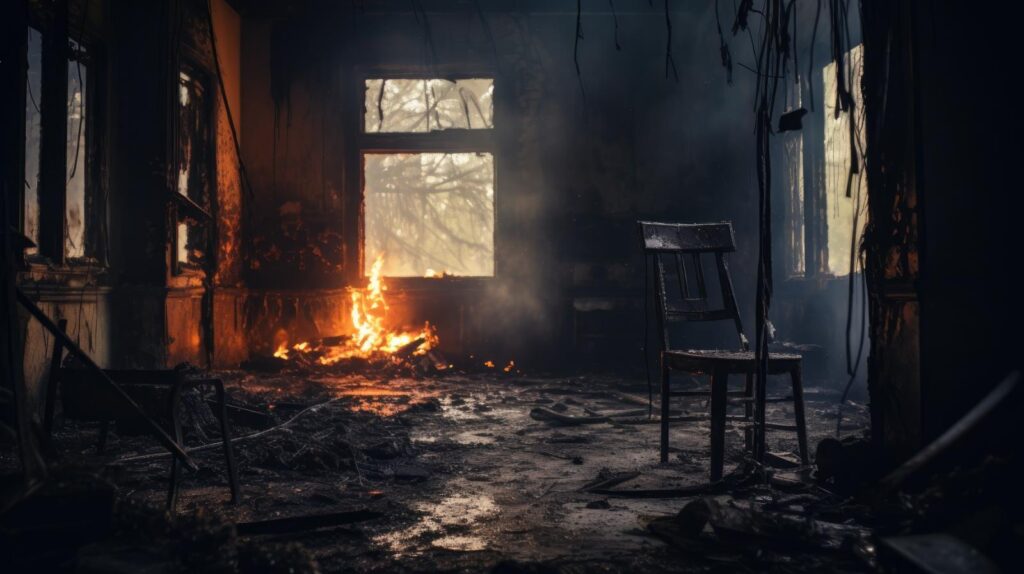
Contents
When it comes to fire damage cleanup for your business, understanding the right methods can make all the difference in recovery. You need to assess the damage thoroughly, tackle water removal effectively, and address smoke and soot issues with the appropriate tools. It’s not just about cleanup; implementing preventive measures post-recovery is crucial to safeguard against future incidents. So, what steps should you prioritize first to ensure a smooth and efficient restoration process? The answer might surprise you.
Key Takeaways
- Ensure safety and assess fire damage by documenting structural, operational, and inventory issues before cleanup begins.
- Utilize specialized equipment for smoke and soot removal, including HEPA filters and dry cleaning sponges.
- Employ effective water removal techniques like pumping, wet vacuuming, and dehumidification to address water damage.
- Conduct thorough structural repairs using reinforcement techniques and collaborate with contractors familiar with local regulations.
- Implement preventive measures such as regular fire drills and modern fire suppression systems to reduce future risks.
Assessing the Damage
How do you begin the daunting task of assessing fire damage to your business? Start by taking a deep breath. It’s essential to approach this damage assessment with a clear mind.
First, ensure your safety and that of your employees. If it’s safe, walk through the affected areas and note visible damage, including structural issues, charred materials, and affected equipment. Photos can be invaluable for your records and for insurance evaluation.
Next, categorize the damage. Separate it into three main areas: structural, operational, and inventory. Structural damage might include compromised walls or ceilings, while operational damage could impact electrical systems or machinery. Your inventory may also suffer, so take stock of any damaged goods. This organized approach helps in providing a clearer picture when dealing with your insurance provider.
Once you have a comprehensive inventory, contact your insurance company. They’ll guide you through the claims process and may send an adjuster to assess the damage alongside you. Be prepared with your documented evidence to support your claims.
Water Removal Techniques
After a fire, water removal is a critical step in the cleanup process, as excess moisture can lead to mold growth and further damage. To effectively manage this issue, you should implement various water extraction methods and moisture control techniques. Each approach plays a vital role in ensuring a safe and healthy environment for your business.
Here’s a quick overview of some effective techniques you can utilize for water removal:
| Technique | Description | Benefits |
|---|---|---|
| Pumping | Use submersible pumps to remove large volumes of water. | Fast and efficient for significant flooding. |
| Wet Vacuuming | Utilize wet vacuums for smaller areas and residual moisture. | Ideal for localized spills and puddles. |
| Dehumidification | Employ dehumidifiers to reduce humidity levels. | Helps prevent mold growth and structural damage. |
| Air Movement | Use fans to enhance air circulation for faster drying. | Speeds up the drying process significantly. |
| Moisture Monitoring | Use moisture meters to track dampness levels. | Ensures all areas are adequately dried. |
Implementing these techniques aids in water removal and helps safeguard your business from long-term repercussions. Stay vigilant during this process, and remember that a thorough approach to moisture control is essential for restoring your space and protecting the well-being of everyone involved.
Smoke and Soot Cleanup
Once you’ve tackled water removal, the next significant challenge is addressing smoke and soot damage. This type of damage can linger and impact the physical structure of your business and the health and comfort of those who enter it.
Here’s how to effectively manage smoke and soot cleanup:
Assess the extent of damage: Identify areas affected by smoke and soot to prioritize your cleanup efforts.
Use the right tools: Invest in specialized equipment designed for soot removal, such as HEPA filters and dry cleaning sponges.
Ventilate the space: Open windows and doors to help dissipate smoke odor while you work.
Consider professional help: Sometimes, it’s best to consult with fire damage restoration experts who understand the intricacies involved.
When you begin the soot removal process, remember that soot particles can be corrosive and may stain surfaces if not addressed promptly.
Utilize a combination of dry cleaning methods for porous materials and wet cleaning solutions for non-porous surfaces. Removing smoke odor is crucial, so consider using air purifiers or ozone generators to further cleanse the air.
Keep in mind that thorough smoke and soot cleanup is vital not just for aesthetics but for restoring a safe, welcoming environment for your employees and customers.
Structural Repairs and Restoration
Addressing structural repairs and restoration is crucial to ensuring your business’s safety and functionality after fire damage. You need to assess the extent of the damage and determine which areas require immediate attention. Engaging with professionals who specialize in fire damage restoration can make a significant difference in the outcome.
When it comes to structural repairs, a variety of repair techniques are available depending on the materials affected. Here’s a quick overview of some common methods and materials used in the restoration process:
| Repair Techniques | Restoration Materials |
|---|---|
| Reinforcement of beams | Steel plates |
| Wall bracing | Plywood or OSB sheathing |
| Foundation repair | Concrete or epoxy resin |
These repair techniques ensure that your building’s integrity is restored while using durable restoration materials to withstand future challenges. It’s vital to work closely with contractors who understand local building codes and safety regulations. They’ll help you navigate the complexities of restoration while ensuring your business gets back on its feet.
Keep in mind that every fire incident is unique, and the approach to repairs should be tailored to your specific situation. By prioritizing structural repairs and using the right materials, you’ll create a safer environment for your employees and customers, fostering a sense of belonging as you rebuild your business.
Preventing Future Damage
To prevent future damage, it’s essential to implement robust fire safety measures that go beyond immediate repairs.
By establishing comprehensive fire prevention and safety protocols, you’ll create a safer environment for your business and employees. This proactive approach safeguards your property and fosters a culture of awareness and responsibility among your team.
Consider the following strategies to enhance your fire safety measures:
- Conduct Regular Fire Drills: Ensure all employees are familiar with evacuation routes and procedures. Practice makes perfect.
- Install Fire Suppression Systems: Invest in modern systems tailored to your specific needs, such as sprinklers or chemical extinguishing agents.
- Maintain Electrical Equipment: Regularly inspect and maintain all wiring and equipment. Faulty wiring can be a significant fire hazard.
- Create a Fire Safety Training Program: Educate your team about fire risks and prevention strategies. Knowledge empowers them to act effectively during emergencies.
Review
In the aftermath of fire damage, taking swift and effective action is crucial to restoring your business. Remember, “an ounce of prevention is worth a pound of cure.” By carefully assessing damage, utilizing proper water removal techniques, and addressing smoke and soot, you can ensure a thorough cleanup. Don’t forget to invest in structural repairs and preventive measures to safeguard your future. With diligence and the right methods, you’ll be well on your way to recovery and resilience.



